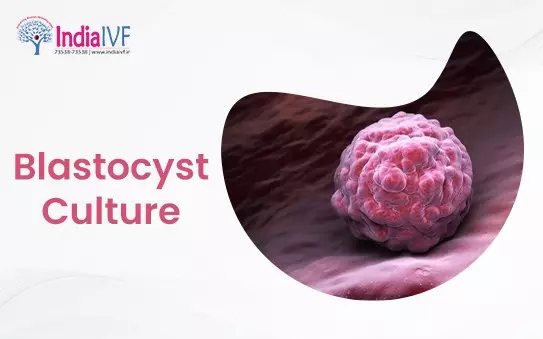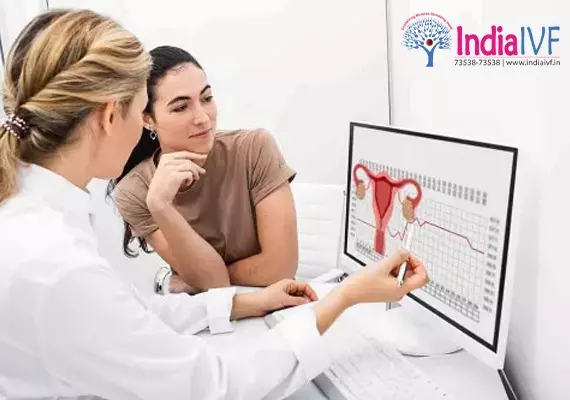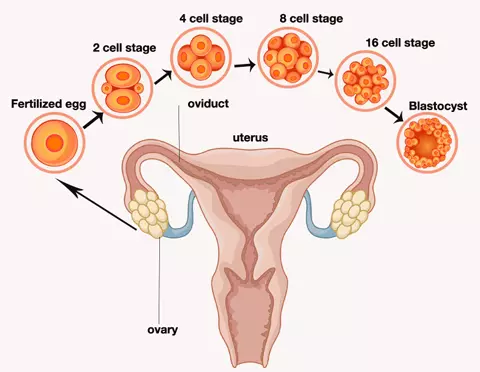Your cart is currently empty!



Blastocyst Culture and Transfer is an advanced technique in the IVF process, wherein embryos are cultured for five to six days before being transferred to the uterus. This method has proven to enhance the chances of a successful pregnancy for couples struggling with infertility. Our IVF Centre in Delhi offers this cutting-edge treatment to couples in Delhi, Noida, and Gurgaon, helping them realise their dreams of parenthood.
Higher Implantation Rates
Culturing embryos until they reach the blastocyst stage allows us to select the most viable ones for transfer. This increases the likelihood of successful implantation and a healthy pregnancy.
Reduced Risk of Multiple Pregnancies
With Blastocyst Culture and Transfer, fewer embryos are transferred, lowering the chances of multiple pregnancies while maintaining high success rates
Improved Synchronization
Transferring blastocysts ensures better synchronisation with the uterus’s lining, leading to higher chances of implantation and a successful pregnancy.
Why are Blastocysts So Important in IVF?
Blastocysts play a crucial role in the IVF process due to several reasons:

Enhanced Selection
By allowing embryos to develop until the blastocyst stage, fertility specialists can better assess their quality and select the most viable ones for transfer. This increases the chances of successful implantation and a healthy pregnancy.
Improved Implantation Rates
Blastocysts have a higher likelihood of implanting in the uterus because they are more developed and better synchronized with the uterine lining, making them more compatible for implantation.
Reduced Risk of Multiple Pregnancies
Transferring fewer, but higher-quality blastocysts reduces the risk of multiple pregnancies, which can lead to complications during pregnancy and childbirth.
A blastocyst is a microscopic structure consisting of approximately 200 to 300 cells. It has a distinct appearance, characterised by the following features:
Inner Cell Mass (ICM)
The ICM is a cluster of cells located within the blastocyst. These cells eventually develop into the embryo.
Trophectoderm
The trophectoderm is a layer of cells surrounding the ICM. These cells develop into the placenta and other supporting structures during pregnancy.
Blastocoel
The blastocoel is a fluid-filled cavity within the blastocyst. It plays a vital role in the embryo’s growth and development.
The development of a blastocyst for transfer in an IVF procedure involves several stages:
Fertilization
The process begins with the fertilisation of the egg by the sperm, resulting in a single-celled zygote.
Cleavage
Over the next few days, the zygote undergoes multiple cell divisions, known as cleavage, to form a multicellular structure called a morula.
Blastocyst Formation
Around day 5 or 6, the morula transforms into a blastocyst, with a fluid-filled cavity and distinct cell populations, such as the ICM and trophectoderm.

Blastocyst Transfer
Once the blastocyst has reached an appropriate stage of development, it is carefully transferred to the uterus, where it can implant and develop into a healthy pregnancy.
Expertise and Experience
Our team of highly skilled fertility specialists brings years of experience in IVF and blastocyst procedures to ensure optimal outcomes for our patients.
State-of-the-Art Facility
We provide a modern, well-equipped facility with the latest technology to ensure the best possible environment for your blastocyst culture and transfer.
Personalized Care and Support
Our compassionate and dedicated staff offers personalized care and support throughout your IVF journey, ensuring you feel comfortable and well-informed every step of the way.
If you’re searching for a trusted IVF Centre in Delhi, Noida, or Gurgaon, look no further. Our expertise in Blastocyst Culture and Transfer can help you overcome fertility challenges and achieve the family of your dreams. Contact us today to learn more about this advanced treatment and begin your path to parenthood.
A blastocyst is a highly developed embryo consisting of around 200-300 cells, typically formed five to six days after fertilization. It is significant in IVF because transferring blastocysts increases the chances of successful implantation and pregnancy, as well as reduces the risk of multiple pregnancies.
Blastocyst Culture and Transfer allows fertility specialists to select the most viable embryos for transfer, ensuring better synchronization with the uterine lining, and consequently, higher chances of implantation and a successful pregnancy.
A Day 3 embryo transfer involves transferring embryos at the cleavage stage, which usually consists of 6-8 cells. A blastocyst transfer occurs around Day 5 or 6 when the embryo has developed into a blastocyst with a more complex cell structure. Blastocyst transfers generally have higher success rates compared to Day 3 transfers.
A blastocyst typically implants into the uterine lining within one to two days following transfer. However, it may take up to 10 days for the implantation process to be complete and for pregnancy hormones to be detectable.
Yes, it is possible for a blastocyst to fail to implant due to various factors, such as poor embryo quality or issues with the uterine lining. In such cases, fertility specialists will investigate the underlying cause to improve the chances of success in subsequent IVF cycles.
While it is possible for a low-quality blastocyst to result in a successful pregnancy, the chances are generally lower compared to high-quality blastocysts. It is essential to discuss your options with your fertility specialist to determine the best course of action.
The risks associated with Blastocyst Culture and Transfer are generally low. However, potential complications may include multiple pregnancies (though the risk is lower than with Day 3 transfers) and the chance of having no embryos suitable for transfer if none develop into blastocysts.
The number of blastocysts transferred depends on factors such as the patient's age, medical history, and embryo quality. Generally, one or two blastocysts are transferred to minimize the risk of multiple pregnancies while maintaining a high chance of success.
While many IVF patients can benefit from Blastocyst Culture and Transfer, it may not be suitable for everyone. Your fertility specialist will consider factors such as your age, medical history, and the number of available embryos to determine if this technique is appropriate for your specific circumstances.
The success rate of Blastocyst Culture and Transfer varies based on individual factors, such as age, embryo quality, and the specific fertility clinic. Generally, blastocyst transfers have higher success rates compared to Day 3 embryo transfers. It is essential to discuss your chances of success with your fertility specialist to better understand your unique situation.
At India IVF Clinics we provide the most comprehensive range of services to cover all the requirements at a Fertility clinic including in-house lab, consultations & treatments.